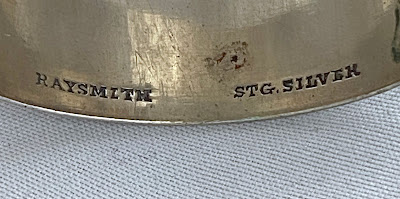Thomas Henry Raysmith started his business in 1876 in Newcastle, New South Wales as Watchmaker, Jeweller and Engraver.
He appears to have also been a silversmith. His work was quoted in the newspaper regarding "the immense number of Masonic jewels, medals, badges, and other trophies manufactured by him bearing testimony to their quality". By the end of his career, he was know as Jeweller and Silversmith.
Below is a nice heavy colonial sterling serviette ring stamped 'RAYSMITH', made probably circa 1890-1900.
He closed his shop in the 1920s.
He passed away 1935 aged 77.
Below is a gold pocketwatch by Raysmith.




Comments